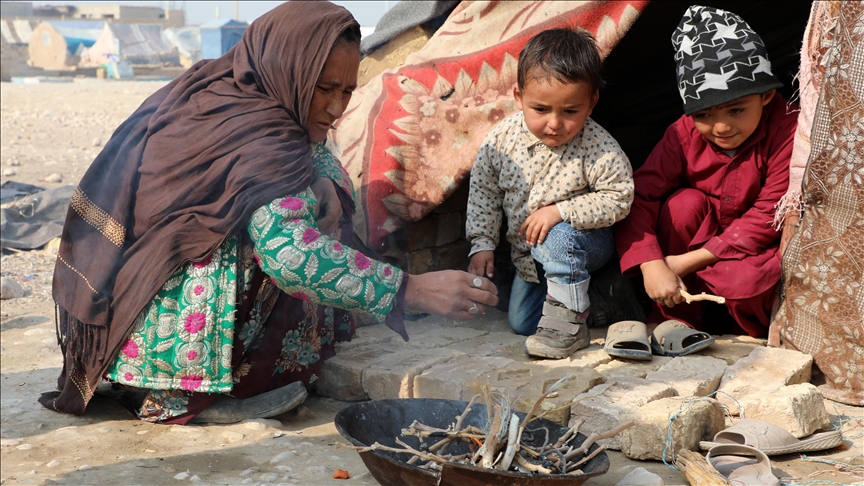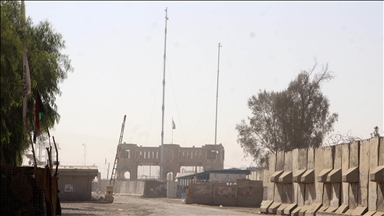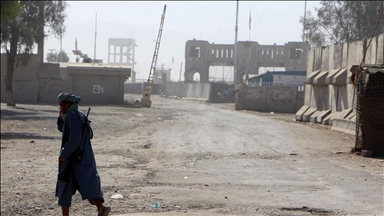In Afghanistan, women and children bearing worst of hunger crisis
Nearly 16 million Afghan people in acute food insecurity, including 3.5 million people at emergency levels, according to UN’s World Food Program
 File Photo
File Photo
- ‘Afghanistan is a crisis where the most vulnerable women and children cannot access the food that is on the market,’ WFP official Philippe Kropf tells Anadolu
- Food security situation has improved since Taliban retook power in 2021, but economic challenges, funding cuts and climate change have left country ‘at risk of losing all the gains,’ says Kropf
ISTANBUL
Afghanistan is one of several countries around the world in the grip of a food crisis, where a mix of politics, economics and nature’s ravages are taking a heavy toll on vast sections of a vulnerable population.
In a country emerging from decades of war and turmoil, women and children are among those particularly impacted by biting food insecurity, according to the UN’s World Food Program (WFP).
“Some of the most affected by the hunger crisis at the moment are women and girls,” Philippe Kropf, WFP’s head of communications in Afghanistan, told Anadolu.
Currently, a third of the Afghan population, or nearly 16 million people, are going hungry, and every province is at crisis levels of food insecurity, or higher, according to the UN agency.
“We have 15.8 million people in acute food insecurity, which includes 3.5 million people facing emergency levels of food insecurity,” Kropf said.
UN figures paint a grim picture for women and girls, with an estimated 1 million malnourished, pregnant and breastfeeding women in Afghanistan in 2023.
Around 2 million girls and boys under the age of 5 were facing moderate acute malnutrition, and nearly 860,000 girls and boys under 5 had severe acute malnutrition.
“Severe acute malnutrition is one of the worst cases, where children do, unfortunately, die regularly,” said Kropf.
Crisis of access
One stark difference when comparing Afghanistan to other countries grappling with food crises is the level of availability.
In Afghanistan, according to the WFP, food is available in most parts of the country, even in the smaller remote districts.
The challenge is that families, including, and in most cases, women and girls, cannot access it because they do not have the money to buy it.
“Afghanistan is a crisis where the most vulnerable women and children cannot access the food that is on the market,” Kropf explained.
Curbs imposed on women’s employment have severely impacted households where women are the main providers.
Many of these are women and widows who are currently not able to go out to work, he said.
“They are not salaried anymore. They cannot find work outside of their homes and it is increasingly difficult for them to buy the food, to buy the basic needs,” said Kropf.
More children are being admitted to hospitals and clinics for malnutrition, with beds fully occupied in some areas, he added.
He cited testimonies of women who have been deprived of the chance to earn an income, or cases where their husbands have moved to neighboring countries for work but are unable to send money to their families.
“Mothers here are relying a lot on borrowing food and money, both from shopkeepers and also from relatives,” said the WFP official.
“They are at the brink and they have very few opportunities left to look after themselves and their children.”
Food security and funding cuts
In August 2021, the Taliban returned to power in Afghanistan.
The food security situation has improved since then, said Kropf, with donor investments and sustained large-scale food assistance helping pull back millions of people from the brink.
Last year, the harvest was also a bit better, he added.
“It was the first on-average harvest in several years. So, we do see a slight improvement of the food security situation, but we are at risk of losing all the gains,” he warned.
“We are now in a situation where we’re kind of stabilized. The economy is in a better state than many people thought two years ago, (but) we’re still not in a good state.”
A major issue is that, in 2023, the WFP had a massive funding shortfall that forced it to drop around 10 million people from assistance programs in Afghanistan.
These included 1.4 million women and children who did not receive any specialized food anymore to prevent and treat malnutrition, said Kropf, adding that the agency is still facing a “big funding crisis.”
This is not a case of “playing one humanitarian crisis against the other,” he asserted, but the number of crises around the globe have left “many more people in need of emergency food assistance.”
“There are, of course, crises that are more in the headlines. So, we’re calling on all our partners and all our donors not to forget about the Afghan girls, boys, women and men who need assistance,” he said.
In previous comments on the aid cuts, Taliban spokesman Zabihullah Mujahid said Afghanistan’s economic situation was “normal” but impacted by the “40 years of war in the country.”
“The countries that help us should increase their cooperation. We appreciate their help and we want more help from them,” he told local broadcaster Tolo News.
Impact of climate change
Afghanistan’s food crisis is also exacerbated by the fact that it is “one of the countries most affected by the climate crisis,” Kropf pointed out.
Since 2018, Afghanistan has been “in drought or in drought-like conditions,” he said, adding that past harvests have not been sufficient to feed the country.
This winter season was also “very much delayed, very late,” so the lack of snow means that “it’s very well possible that Afghanistan is going into another year of drought-like conditions,” said Kropf.
He said erratic weather patterns fluctuating between drought and floods are taking a massive toll on agriculture.
This issue was also raised by an Economy Ministry official in comments to Tolo News.
“Climate change and droughts have affected the agriculture sector and social security to some extent,” said Abdul Rahmad Habib, a ministry spokesman, stressing that “dealing with climate change” is a key government priority.
At the moment, Kropf said people in Afghanistan are in a place where they “cannot prepare, cannot predict” the weather patterns.
“Just a few weeks back … hundreds of animals, livestock, sheep, goat, donkeys, cows died in the snow because shepherds brought them out far into the desert to find food, suspecting that the winter is over,” he said.
“Suddenly, winter came with meters of snow and hundreds of livestock perished. So, these are the long-term challenges that we are seeing in Afghanistan.”
Anadolu Agency website contains only a portion of the news stories offered to subscribers in the AA News Broadcasting System (HAS), and in summarized form. Please contact us for subscription options.







